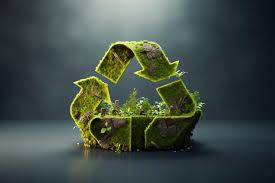In today’s rapidly urbanizing world, effective waste management is critical to reducing environmental pollution and fostering a sustainable future. As populations grow and consumption patterns change, traditional waste management systems are no longer sufficient to address the mounting challenges. To achieve a cleaner and greener world, innovative waste management strategies must be adopted. In this article, we will explore the emerging technologies, trends, and solutions that are transforming waste management and offering a more sustainable approach to dealing with waste.
Why Waste Management Matters
Waste management is an essential part of environmental sustainability, as improper waste disposal can lead to severe consequences such as:
- Pollution: Landfills and incinerators release harmful gases and chemicals into the air and water, impacting both human health and wildlife.
- Resource Depletion: The continued extraction of raw materials and reliance on non-renewable resources contribute to environmental degradation.
- Climate Change: Waste in landfills generates methane, a potent greenhouse gas that accelerates climate change.
Effective waste management helps reduce pollution, conserve resources, and mitigate climate change, making it a crucial aspect of any sustainable development strategy.
Innovative Waste Management Solutions
Innovation in waste management is driving the shift towards a more circular economy, where waste is minimized, reused, and recycled. Let’s explore some of the most promising and innovative strategies that are helping create a cleaner, greener future.
1. Waste-to-Energy (WTE) Technologies
One of the most innovative approaches to managing waste is converting it into energy through Waste-to-Energy (WTE) technologies. These technologies, such as incineration, anaerobic digestion, and gasification, allow waste to be converted into electricity or heat. By turning waste into a resource, WTE not only reduces landfill waste but also generates clean energy, helping reduce dependence on fossil fuels.
- Anaerobic Digestion: This process breaks down organic waste to produce biogas, which can be used to generate electricity or heat.
- Gasification: This technology uses high temperatures to convert waste into synthetic gas, which can be further processed into electricity.
2. Smart Waste Management Systems
Advancements in technology have also led to the development of smart waste management systems, where digital solutions improve the efficiency and effectiveness of waste collection and disposal. These systems use sensors, data analytics, and the Internet of Things (IoT) to track waste levels, optimize collection routes, and monitor waste streams in real-time.
- Smart Bins: Waste bins equipped with sensors can detect when they are full and automatically notify waste management companies, reducing unnecessary collection trips and fuel consumption.
- Data-Driven Solutions: Waste management companies can use data to predict waste patterns, optimize routes, and reduce overall costs while enhancing service delivery.
3. Recycling Innovations
Recycling is a cornerstone of sustainable waste management. New technologies and processes are making it easier to recycle a wider variety of materials, increasing the efficiency of the recycling process.
- Robotic Sorting: Advanced robotics and artificial intelligence (AI) are now being used to improve the sorting process at recycling plants. Robots equipped with AI can identify and separate materials faster and more accurately than humans, leading to higher recycling rates.
- Chemical Recycling: This emerging technology allows plastic waste to be broken down into its original chemical components, enabling it to be reused in new products. This process addresses the challenges of recycling plastic, which has long been a difficult material to recycle effectively.
4. Circular Economy Initiatives
A circular economy focuses on reducing waste and reusing products and materials as much as possible. This model contrasts with the traditional linear economy, which follows the “take, make, dispose” pattern. In a circular economy, products are designed for durability, repairability, and recyclability, ensuring that materials stay in use longer and waste is minimized.
- Product Redesign: Companies are shifting towards designing products that are easier to repair and recycle, reducing the environmental impact of disposal.
- Closed-Loop Recycling: This approach ensures that products are made from recycled materials, creating a cycle where waste is continuously reused.
5. Composting and Organic Waste Management
Organic waste, such as food scraps and yard trimmings, makes up a significant portion of the waste stream. Innovative composting solutions are being implemented to divert organic waste from landfills, where it would otherwise contribute to methane emissions.
- Urban Composting: With the rise of urban farming and gardening, cities are encouraging composting to manage organic waste locally. Community composting programs are helping residents transform food waste into nutrient-rich soil for urban gardens.
- Composting Technologies: Advanced composting systems, including in-vessel composters, are being used to break down organic waste more efficiently, creating valuable compost for agricultural use.
6. Waste Reduction through Education and Awareness
A critical aspect of waste management is prevention, and innovative waste reduction strategies are increasingly focused on consumer education. Governments, businesses, and non-profit organizations are creating awareness programs to encourage waste reduction, reuse, and recycling in households and businesses.
- Zero-Waste Campaigns: Promoting zero-waste lifestyles, where consumers aim to reduce their waste production to an absolute minimum, is becoming more popular.
- Corporate Social Responsibility (CSR): Many companies are adopting waste-reduction strategies and setting goals to minimize their waste output as part of their CSR initiatives.
The Role of Government and Policy in Waste Management
Governments play a crucial role in shaping waste management strategies by implementing policies and regulations that encourage innovation and sustainability. Some key approaches include:
- Extended Producer Responsibility (EPR): This policy holds manufacturers responsible for the entire lifecycle of their products, including end-of-life disposal.
- Waste Reduction Goals: Many countries and cities have set ambitious goals to reduce landfill waste, increase recycling rates, and minimize plastic usage.
- Incentives for Green Technologies: Governments are offering incentives for companies that develop and implement green technologies, such as waste-to-energy plants and advanced recycling systems.
Conclusion: A Cleaner, Greener Future Through Innovation
Innovative waste management solutions are transforming the way we deal with waste, offering sustainable strategies that reduce environmental impact and conserve resources. From waste-to-energy technologies and smart waste management systems to the circular economy and advancements in recycling, innovation is paving the way for a cleaner, greener future.
As we continue to confront the challenges of waste, it is essential that businesses, governments, and individuals work together to adopt these innovative strategies and move toward a more sustainable and circular approach to managing waste.
The future of waste management lies in harnessing technology, embracing sustainable practices, and fostering a culture of responsibility. By doing so, we can ensure a cleaner, healthier planet for future generations.
SEO Tips:
- Keywords: innovative waste management, waste-to-energy, recycling innovation, smart waste management, circular economy, waste reduction, sustainable waste management, composting, waste management technology, zero-waste solutions, waste management strategies, environmental sustainability.
- Meta Description: Discover innovative waste management strategies for a cleaner, greener future. Learn about waste-to-energy, recycling technologies, smart systems, and sustainable solutions.
- Headings: Use headings like “Innovative Waste Management Solutions,” “Waste-to-Energy Technologies,” and “The Role of Government and Policy” to improve search engine rankings.

